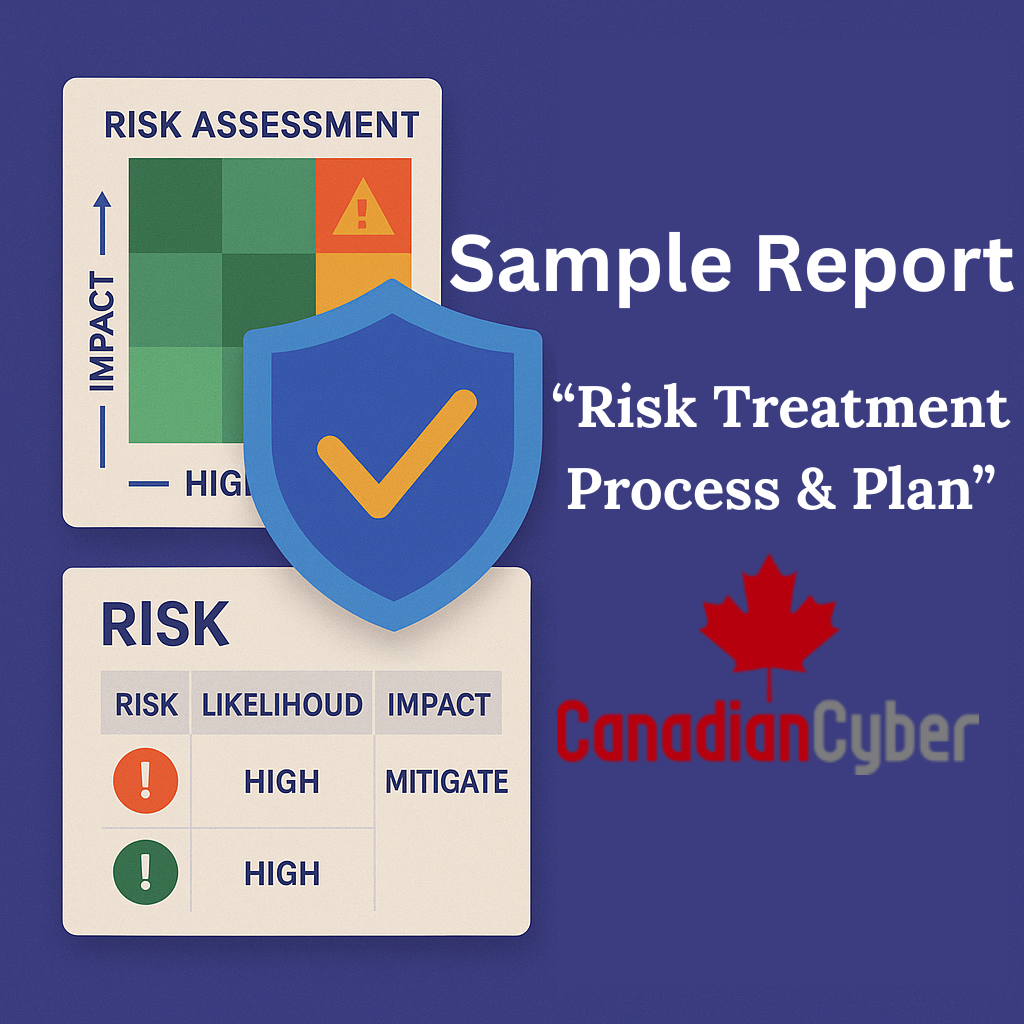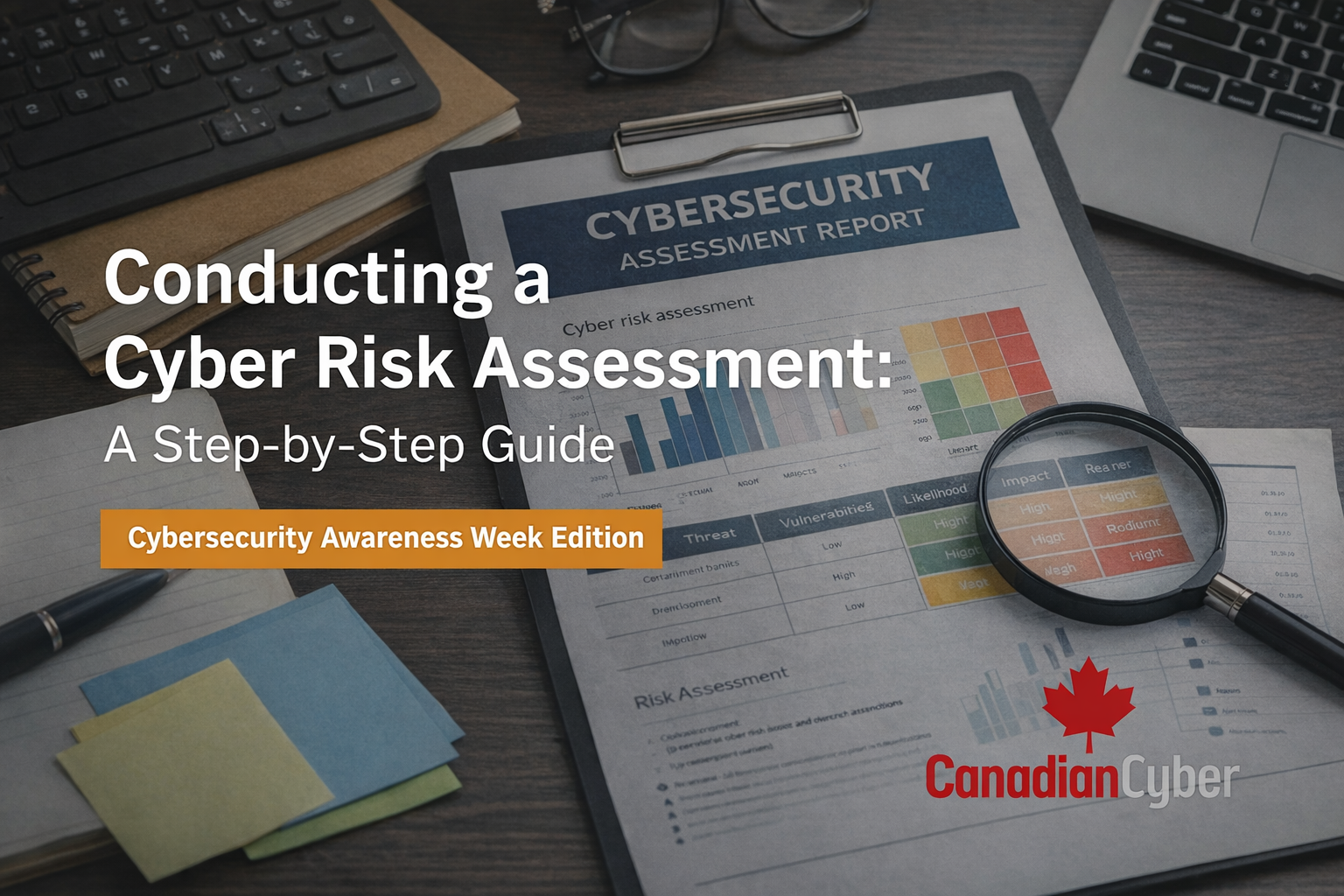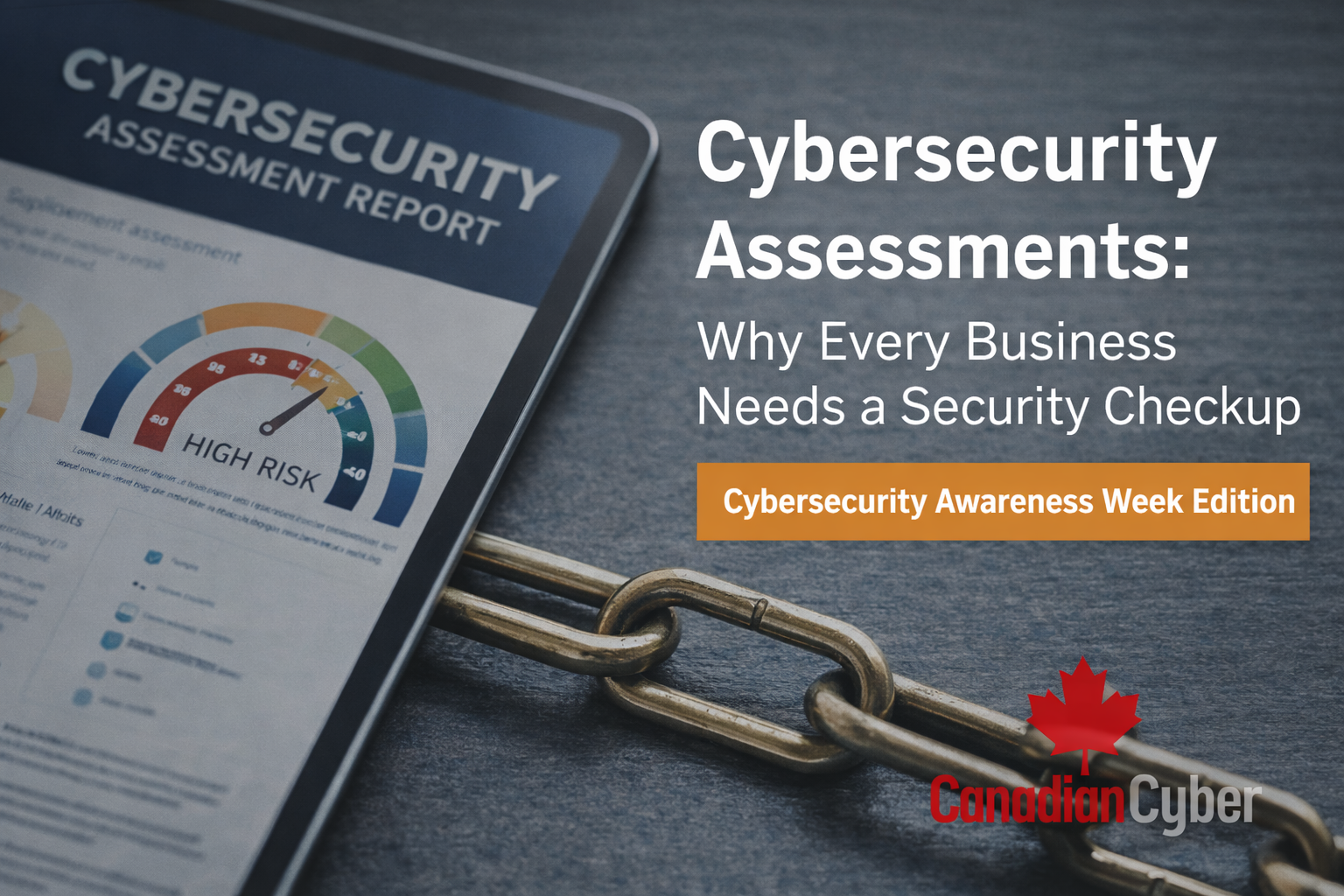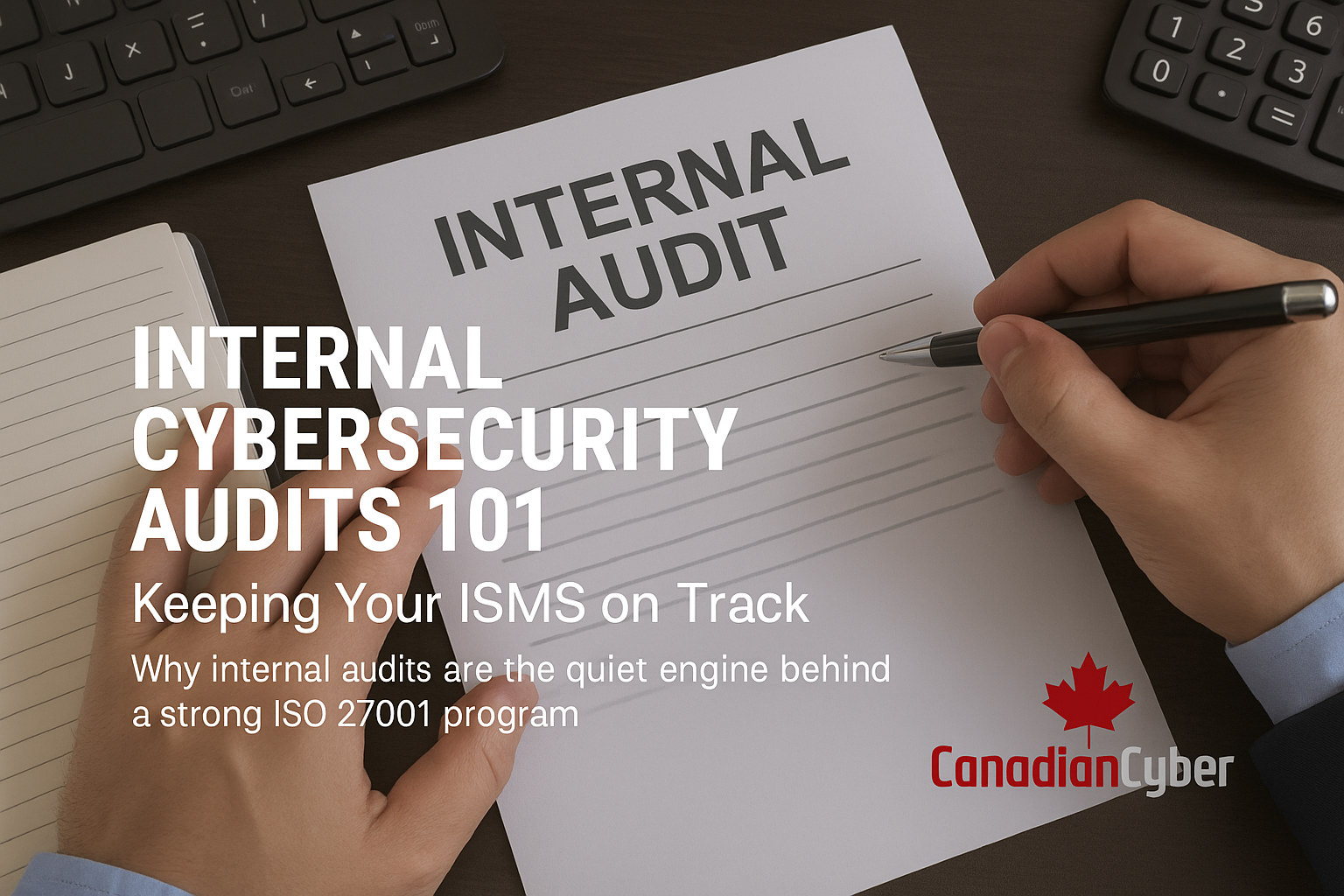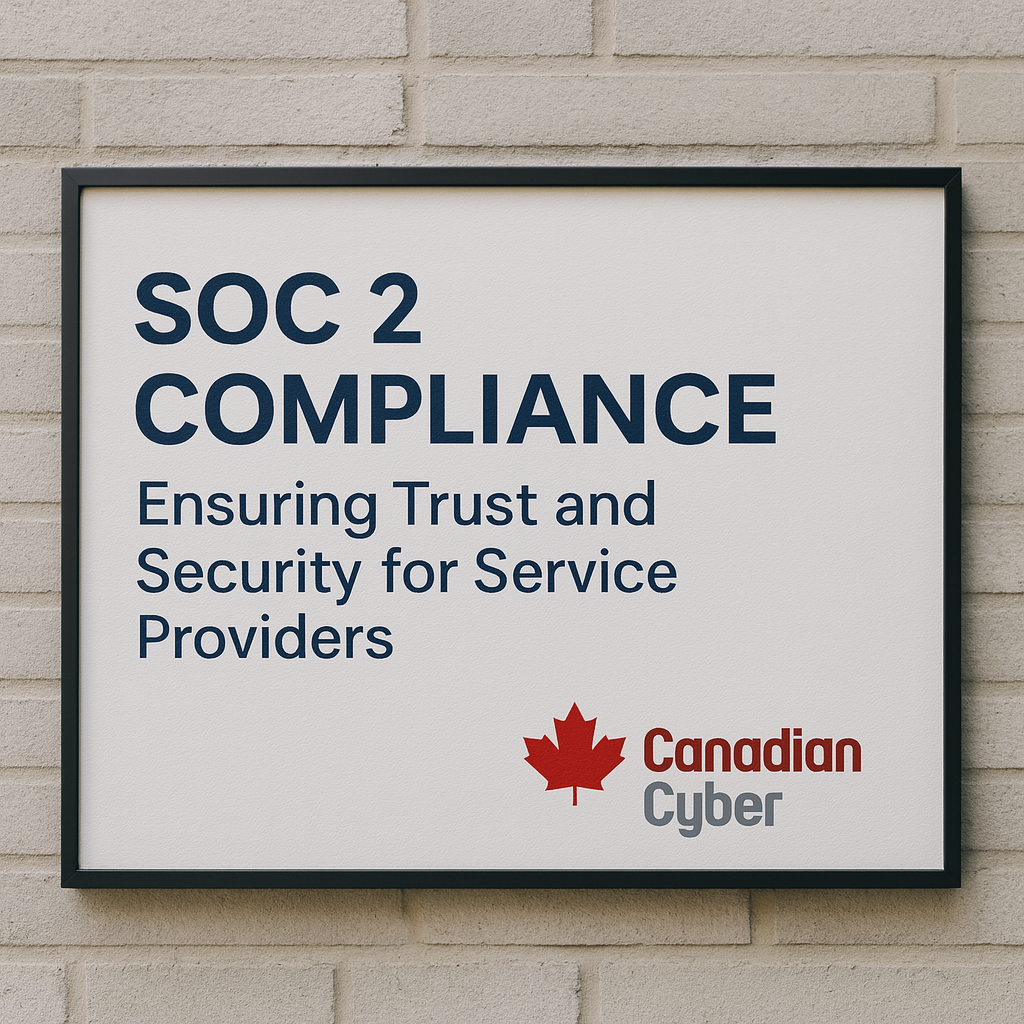How SaaS Companies Can Build a Robust ISO 27001 Risk Management Process
Turning Cyber Risk into Customer Confidence
For SaaS companies, data is everything. Your platform stores customer records, billing details, proprietary logic, and often integrates with hundreds of other systems. That makes you both a high-value target and a potential weak link in your customers’ security chain.
An effective Risk Management and Treatment Process is therefore not just a compliance task it’s the backbone of trust, resilience, and long-term growth.
At Canadian Cyber, we’ve developed a detailed Risk Treatment Process & Plan Template (CC-ISMS-005) aligned with ISO/IEC 27001:2022 Clause 6.1.3. It helps SaaS organizations like yours identify, treat, and monitor risks systematically while building the documentation auditors, investors, and clients expect to see.
Why SaaS Companies Need a Structured Risk Management Process
In a SaaS environment, risk doesn’t only come from malicious actors it can also stem from human error, insecure APIs, misconfigured cloud resources, or third-party dependencies.
A defined, repeatable risk treatment process enables your company to:
- Detect and mitigate potential vulnerabilities early.
- Prove due diligence under standards like ISO 27001, SOC 2, and GDPR.
- Protect uptime and data integrity your most valuable assets.
- Build confidence with enterprise clients demanding compliance evidence.
A formal process doesn’t slow innovation it safeguards it.
The ISO 27001 Risk Treatment Process
Using Canadian Cyber’s CC-ISMS-005 template, SaaS companies can follow a clear, five-step process to manage risk effectively and consistently:
- Identify and Evaluate Risks: Determine which threats could impact your SaaS platform, systems, and customers.
- Decide on Treatment: Choose to avoid, mitigate, transfer, or accept each risk.
- Select Controls: Apply specific ISO 27001 Annex A controls relevant to each risk.
- Assign Responsibility: Ensure clear ownership for every treatment action.
- Monitor and Review: Measure control effectiveness and update the plan regularly.
Let’s see what this looks like for a real SaaS company scenario.
Sample Risk Treatment Process & Plan
(Based on the Canadian Cyber CC-ISMS-005 Template)
Note: The following example uses a fictitious company, CloudNova Software Inc., created solely for demonstration purposes. It illustrates how a SaaS organization might apply ISO 27001 risk treatment principles using the Canadian Cyber template.
1. Purpose
This Risk Treatment Plan defines how CloudNova Software Inc. identifies, evaluates, and manages information security risks across its SaaS platform, infrastructure, and operations. It ensures compliance with ISO/IEC 27001:2022 and demonstrates the company’s commitment to protecting customer data.
2. Scope
This process applies to all departments, employees, contractors, and third parties who access or manage CloudNova’s data or systems. It covers all SaaS infrastructure components from AWS-hosted environments and CI/CD pipelines to internal systems and end-user data stored in the cloud.
3. Risk Treatment Framework
CloudNova’s risk treatment process follows five key steps:
- Identify Risks through continuous assessments, vulnerability scans, and incident reports.
- Evaluate Risks by assigning likelihood and impact scores.
- Select Treatment Options (avoid, mitigate, transfer, accept).
- Implement Controls using ISO 27001 Annex A standards.
- Monitor, Measure, and Improve through regular ISMS reviews.
4. Roles and Responsibilities
- The Chief Executive Officer (Laura Kim) approves this plan, ensures resources are available, and signs off on residual risk acceptance.
- The ISMS Manager (David Singh) coordinates the risk management process, maintains documentation, and ensures all risks are tracked and reviewed.
- The Chief Technology Officer (Sarah Nguyen) oversees the implementation of technical controls, including cloud security configurations, code reviews, and monitoring systems.
- The DevOps Lead (Michael Chan) manages vulnerabilities and patch cycles within the SaaS production and development pipelines.
- All employees and contractors are required to report any identified risks or control failures immediately to the ISMS Manager.
5. CloudNova’s Risk Treatment Plan (2025)
| # | Risk | Level | Treatment | Key Actions | ISO/IEC 27001 Controls (Annex A) | Owner | Residual Risk |
|---|---|---|---|---|---|---|---|
| R1 | Cloud Misconfiguration Leading to Data Exposure | High | Mitigate | Enable AWS Config and GuardDuty monitoring; enforce encryption at rest and in transit; implement automated configuration drift alerts. | A.8.11 (Secure Configuration), A.8.16 (Monitoring Activities) | CTO | Low |
| R2 | Compromise of Administrative Credentials | High | Mitigate | Enforce multi-factor authentication (MFA) for all admin accounts; rotate credentials quarterly; enable Just-In-Time (JIT) access. | A.5.17 (Authentication Information), A.5.15 (Access Control) | ISMS Manager | Low |
| R3 | Third-Party API Breach | Medium | Transfer / Mitigate | Evaluate API vendors’ SOC 2 and ISO 27001 certifications; include data protection clauses in contracts; monitor API activity logs. | A.5.19 (Supplier Relationships), A.5.20 (Supplier Agreements), A.5.22 (Supplier Service Monitoring) | Procurement Lead | Medium |
| R4 | Developer Error or Unsecured Code Commit | Medium | Mitigate | Implement automated static code analysis; enforce pre-commit checks and peer reviews; limit repository access based on roles. | A.8.28 (Secure Development Life Cycle), A.8.29 (Testing of Security Functionality) | DevOps Lead | Low |
| R5 | Insider Data Access Misuse | Low | Accept (with justification) | Maintain activity logs and behavior monitoring; review privileged access quarterly; require signed confidentiality agreements. | A.8.15 (Logging and Monitoring), A.6.2 (Terms and Conditions of Employment) | HR Manager | Low (Accepted by CEO) |
6. Monitoring and Review
CloudNova’s ISMS Manager reviews all open risks monthly and reports progress to senior management during quarterly review meetings.
The Risk Treatment Plan is updated annually or following significant operational or regulatory changes. All records and approvals are stored securely in the ISMS SharePoint repository and retained for six years.
Approved by: Laura Kim, CEO | Date: October 15, 2025
Why This Example Works
This example demonstrates how a SaaS company can transform ISO 27001 risk treatment requirements into practical, traceable actions.
It shows that CloudNova:
- Maps every risk to an Annex A control and responsible owner.
- Documents decisions, justifications, and residual risk levels.
- Establishes clear accountability and executive oversight.
- Operates a “living” risk management system not a static document.
This is exactly what ISO 27001 auditors and enterprise clients look for when evaluating SaaS security maturity.
How Canadian Cyber Helps SaaS Companies Succeed
At Canadian Cyber, we help SaaS organizations across Canada build, document, and maintain effective ISO 27001-compliant risk management programs.
- ✅ ISO 27001 Risk Treatment Templates (CC-ISMS-005) customized for SaaS environments.
- ✅ Risk Registers and Statements of Applicability ready for certification audits.
- ✅ Continuous Risk Monitoring and compliance automation solutions.
- ✅ Virtual CISO (vCISO) Services for security leadership and strategy.
- ✅ Audit Preparation and Certification Support for ISO 27001 and SOC 2.
We don’t just help you meet compliance we help you turn it into a competitive advantage that wins client trust and accelerates growth.
Ready to Strengthen Your SaaS Risk Management Process?
Your customers trust you with their data show them that trust is well-placed. Let Canadian Cyber help you build an ISO 27001-ready Risk Treatment Plan that protects your business and powers your growth.
Schedule Your Free Consultation



